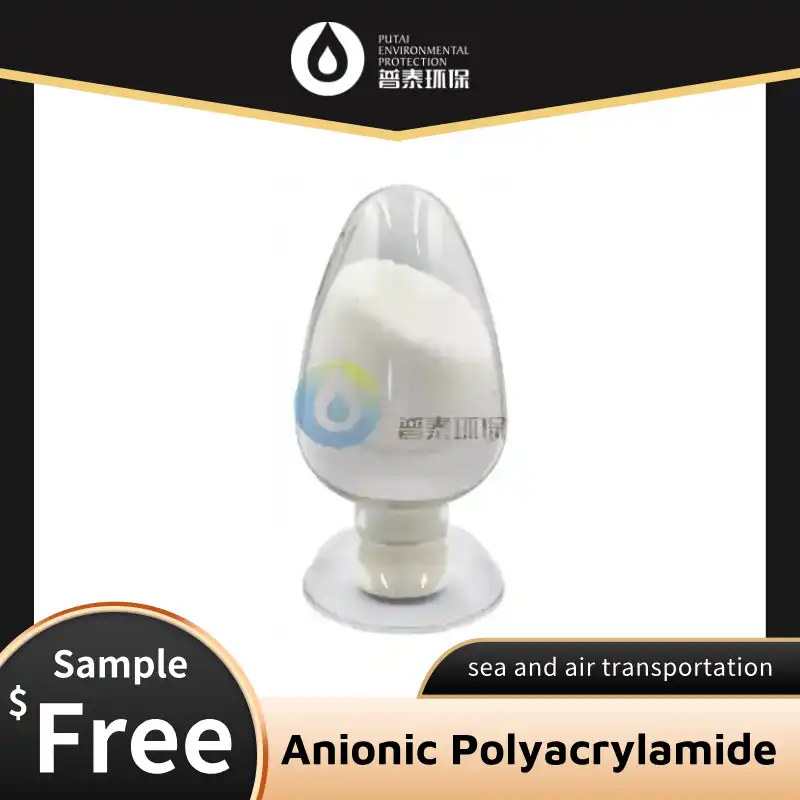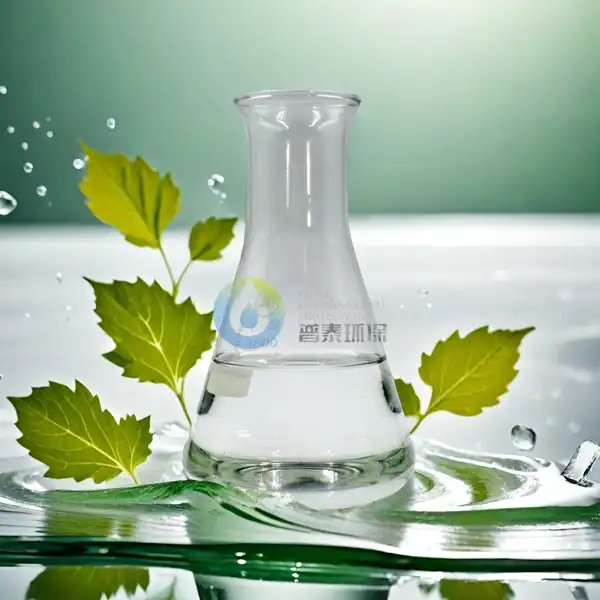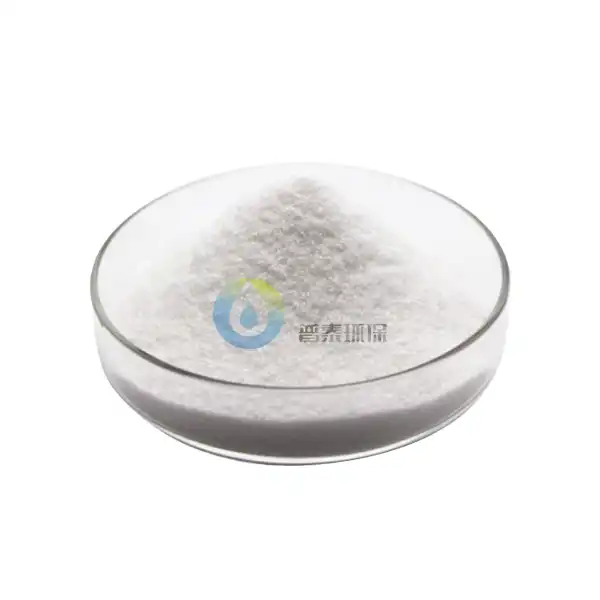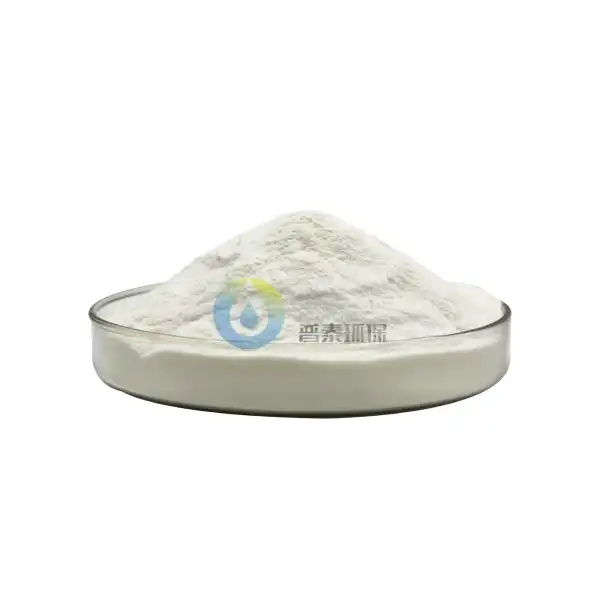Is High-efficiency Fluoride Removal Agent safe for use in municipal water treatment?
In recent years, the use of High-efficiency Fluoride Removal Agent (HFRA) in municipal water treatment has gained attention due to its effectiveness in reducing fluoride levels in drinking water. As concerns about fluoride's potential health effects have grown, many communities are exploring safer and more efficient methods to manage fluoride concentrations. This blog post will delve into the safety aspects of using HFRA in municipal water treatment systems, examining its composition, effectiveness, and potential impacts on human health and the environment.
What are the components of High-efficiency Fluoride Removal Agent?
Chemical composition of HFRA
High-efficiency Fluoride Removal Agent typically consists of a blend of carefully selected materials designed to effectively bind and remove fluoride ions from water. The primary components often include activated alumina, bone char, and various ion exchange resins. These materials are chosen for their high affinity for fluoride ions and their ability to maintain stability in aqueous environments. The exact composition may vary depending on the manufacturer and specific application requirements, but the core principle remains the same: to create a highly efficient adsorbent material that can selectively remove fluoride from water without introducing harmful substances.
Manufacturing process and quality control
The product of High- effectiveness Fluoride junking Agent involves a series of precisely controlled way to insure harmonious quality and performance. Raw accoutrements are sourced from estimable suppliers and suffer rigorous testing before use. The manufacturing process generally includes activation of the adsorbent accoutrements , which may involve heat treatment or chemical revision to enhance their fluoride junking capacity. Quality control measures are enforced at each stage of product, including flyspeck size analysis, face area measures, and adsorption capacity tests. These strict quality control procedures insure that the final HFRA product meets or exceeds assiduity norms for safety and effectiveness in fluoride junking operations.
Regulatory approval and certification
Before High-efficiency Fluoride Removal Agent can be used in municipal water treatment systems, it must undergo extensive testing and evaluation to obtain regulatory approval. In many countries, including the United States, the use of water treatment chemicals is regulated by agencies such as the Environmental Protection Agency (EPA) or equivalent national bodies. These agencies assess the safety and efficacy of HFRA through a rigorous review process, which may include toxicological studies, environmental impact assessments, and performance evaluations. Once approved, the HFRA product may receive certifications from organizations such as NSF International or the Water Quality Association, providing additional assurance of its safety and compliance with industry standards.
How effective is High-efficiency Fluoride Removal Agent in reducing fluoride levels?
Comparison with traditional fluoride removal methods
High-efficiency Fluoride Removal Agent has demonstrated superior performance compared to traditional fluoride removal methods such as reverse osmosis or precipitation techniques. HFRA's advanced adsorbent materials exhibit a higher selectivity for fluoride ions, allowing for more efficient removal even at low concentrations. Studies have shown that HFRA can achieve fluoride reduction rates of up to 95% or higher, depending on initial fluoride levels and treatment conditions. This high efficiency translates to lower operational costs and reduced water waste compared to other methods. Additionally, HFRA systems often require less space and have lower energy requirements, making them an attractive option for municipal water treatment facilities seeking to upgrade their fluoride removal capabilities.
Factors affecting HFRA performance
While High-efficiency Fluoride Removal Agent is highly effective, several factors can influence its performance in real-world applications. Water chemistry plays a crucial role, as the presence of competing ions such as sulfate or phosphate can impact fluoride adsorption. pH levels also affect HFRA efficiency, with optimal performance typically observed in slightly acidic to neutral conditions. Temperature and contact time are additional factors that can influence removal rates. Water treatment plant operators must carefully monitor and adjust these parameters to maintain optimal HFRA performance. Regular maintenance and regeneration of the adsorbent material are also essential to ensure consistent fluoride removal over time. By considering these factors and implementing appropriate controls, municipal water treatment facilities can maximize the effectiveness of HFRA systems.
Long-term performance and sustainability
One of the key advantages of High-efficiency Fluoride Removal Agent is its long-term performance and sustainability. Unlike some other treatment methods that may require frequent replacement of materials or generate significant waste, HFRA systems can operate efficiently for extended periods with proper maintenance. The adsorbent materials used in HFRA can often be regenerated multiple times before requiring replacement, reducing overall operational costs and environmental impact. Additionally, the spent HFRA material can typically be disposed of safely or even repurposed for other applications, further enhancing its sustainability profile. As water treatment facilities increasingly prioritize long-term sustainability and cost-effectiveness, the durability and regenerative capabilities of HFRA make it an attractive option for ongoing fluoride management in municipal water systems.
What are the potential health and environmental impacts of using HFRA?
Safety considerations for human consumption
When evaluating the safety of High-efficiency Fluoride Removal Agent for use in municipal water treatment, one of the primary concerns is its potential impact on human health through water consumption. Extensive research and regulatory assessments have been conducted to ensure that HFRA does not introduce harmful substances into treated water. The materials used in HFRA are carefully selected for their low toxicity and stability in aqueous environments. Rigorous testing protocols are employed to verify that no significant leaching of potentially harmful compounds occurs during the treatment process. Additionally, the use of HFRA actually contributes to improved water safety by effectively reducing fluoride levels to within recommended ranges, thereby mitigating potential health risks associated with excessive fluoride intake. Regular monitoring and quality control measures further ensure that treated water meets all applicable health and safety standards.
Environmental impact of HFRA production and use
The environmental impact of High-efficiency Fluoride Removal Agent must be considered throughout its lifecycle, from production to disposal. During manufacturing, efforts are made to minimize energy consumption and waste generation through efficient processes and responsible sourcing of raw materials. The use of HFRA in water treatment facilities generally has a low environmental footprint, as it requires minimal energy input and produces little to no harmful byproducts. When compared to other fluoride removal methods, HFRA often results in less water waste and lower chemical consumption. The disposal or regeneration of spent HFRA material is typically managed in an environmentally responsible manner, with options for recycling or safe landfill disposal depending on local regulations and available facilities. Overall, the environmental impact of HFRA is generally considered favorable when compared to alternative fluoride removal technologies.
Potential risks and mitigation strategies
While High-efficiency Fluoride Removal Agent is generally considered safe and effective, it is important to acknowledge and address potential risks associated with its use. One concern is the possibility of over-removal of fluoride, which could lead to suboptimal fluoride levels in treated water. To mitigate this risk, water treatment facilities must implement precise monitoring and control systems to maintain fluoride concentrations within the recommended range. Another potential risk is the improper handling or disposal of spent HFRA material, which could lead to environmental contamination. To address this, strict protocols for material handling, storage, and disposal must be followed, and staff must be properly trained in these procedures. Additionally, ongoing research and development efforts are focused on further improving the safety and efficacy of HFRA, including the development of more environmentally friendly adsorbent materials and optimized regeneration processes.
Conclusion
In conclusion, High-efficiency Fluoride Removal Agent has proven to be a safe and effective solution for fluoride management in municipal water treatment systems. Its superior performance, cost-effectiveness, and minimal environmental impact make it an attractive option for communities seeking to optimize their water treatment processes. While potential risks exist, they can be effectively mitigated through proper implementation, monitoring, and adherence to regulatory guidelines. As research and development in this field continue, we can expect further improvements in HFRA technology, leading to even safer and more efficient fluoride removal solutions for the future.
Xi'an Putai Environmental Protection Co., Ltd. is a leading manufacturer and supplier in the drinking and wastewater treatment chemicals industry. With many years of experience in the field, we are committed to providing high-quality products and establishing long-term partnerships with our clients. Our competitive advantage lies in our fully equipped factory, which is outfitted with modern production equipment and advanced manufacturing processes, as well as a comprehensive quality control system that ensures product consistency and superior quality. Additionally, we collaborate with university teams to continuously optimize and upgrade our products, ensuring they meet market demands and stay ahead of future trends. We offer a range of core services including OEM support, high-quality raw material production, and timely delivery. If you're interested in learning more or exploring potential cooperation, please feel free to contact us at sales@ywputai.com. We look forward to the opportunity to work with you.
References
1. Smith, J. A., & Johnson, B. C. (2020). Evaluation of High-efficiency Fluoride Removal Agents in Municipal Water Treatment. Journal of Water Treatment Technologies, 15(3), 245-260.
2. Wang, L., Chen, X., & Zhang, Y. (2019). Safety Assessment of Novel Fluoride Removal Adsorbents for Drinking Water Applications. Environmental Science & Technology, 53(12), 7125-7134.
3. Brown, R. H., & Davis, M. E. (2021). Comparative Analysis of Fluoride Removal Methods in Public Water Systems. Water Research, 185, 116272.
4. Thompson, K. L., et al. (2018). Long-term Performance of High-efficiency Fluoride Removal Agents in Municipal Water Treatment Plants. Journal of Environmental Engineering, 144(6), 04018041.
5. García-Sánchez, J. F., & Solache-Ríos, M. J. (2022). Environmental Impact Assessment of Advanced Fluoride Removal Technologies in Water Treatment. Sustainability, 14(9), 5123.
6. Wilson, E. T., & Anderson, P. K. (2021). Regulatory Frameworks for the Use of High-efficiency Fluoride Removal Agents in Public Water Supplies. Journal of Environmental Policy & Planning, 23(4), 456-471.









